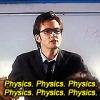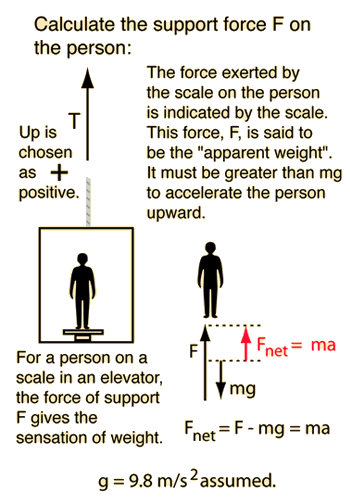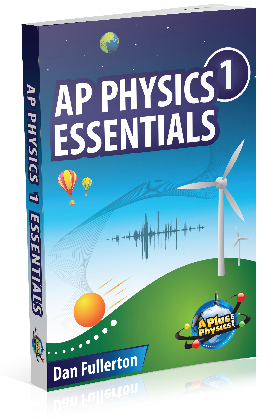Blogs
Our community blogs
-

- 28
entries - 25
comments - 36171
views
Recent Entries
Latest Entry
Holograms
This post will delve less into video games and more into science fiction. Holograms are often shown in sci-fi movies and tv to show futuristic technology. Holograms are usually depicted as images created purely by light. Currently, we have digital projectors, able to display a color image on a flat surface. However, most holograms in pop culture have a 3d image. This would be difficult to accomplish realistically, since in order to create a 3 dimensional image, the light would need something to refract off of. The same way that a laser pointer will show a line through smoke or fog, but only shows a dot through the air. Creating a 3d hologram would require that light be refracted in specific regions in order to create an image. Figuring out a way to do this for a moving image, especially at a high framerate, would be difficult. I hope that one day technology advances to a point where I can see this happen.
- 28
-

- 114
entries - 5
comments - 35019
views
Recent Entries
 Latest Entry
Latest Entry
Partner Quiz 6 Solutions
Click for the solutions to partner quiz 6.
- Read more...
-
- 0 comments
- 114
-

- 127
entries - 27
comments - 34705
views
Recent Entries
 Latest Entry
Latest Entry
Failure is Necessary for Growth
Time for a little mental health rant…
We all want our children to be the best they can be, to feel good about themselves, and to reach their potential. Part of this process, however, involves learning to fail productively — understanding and experiencing what it’s like to fall short, knowing that sick feeling in your gut is uncomfortable but necessary, and disliking that feeling enough to do something about it and try again.
I sure hope I’m wrong, but I feel like many of the changes I’m seeing in the way we as a society deal with children is sending the wrong message. These changes are made with the best of intentions — we don’t want anyone to feel left out, and we don’t want children to experience the pain of failure — but we as adults who know better need to recognize that these uncomfortable experiences are important to building up confidence, self esteem, and independence. Kudos that aren’t truly earned don’t teach a child to work hard, they teach a child that showing up is enough.
I’m not saying little ones need to be beaten into submission, or that I should always crush my kid in a game of Connect Four — but I do think they need to learn that they can’t win every time, otherwise there’s no impetus to improve. They won’t always get picked first to be on a team, there will be days when they are left out of activities their friends get to experience, and there will be events when they’ll leave the field and not be the winner of the event. This is OK, it’s an opportunity learn the importance of giving your all, of preparing as fully as possible, and the value of sportsmanship, both on top and at the bottom of the podium.
I think it’s also important for our kids to understand what makes us proud and what is disappointing. Sportsmanship is important, but it’s also important to realize that decisions leading up to events contribute to the success or failure of that event. As a teacher I observe students who work their tail off and struggle for a middling grade… and I try to instill a sense of pride in that work and that grade. I also have students who slack off and are naturally talented enough to earn A’s. I try to explain to these students that they are not reaching their potential, and I don’t find that acceptable. There will be times when our kids may try and try and try, but never reach the level of success that they desire. Recently I’ve dealt with repeated instances of academic dishonesty, from students who are taking shortcuts in their classes, and aren’t recognizing the connection between their integrity, work ethic, and results.
True self esteem and confidence comes from understanding that you can go to bed every night with no regrets, having given your all, not from an external source such as a trophy or a piece of paper with a letter on it. And not meeting every goal just tells you that you’ve set aggressive goals. If you reach every one of your goals, you’re not reaching high enough.
I don’t think it’s valuable to get into specifics, as you can find “opportunity for improvement” in so many of the things we do and say with our kids, from the toddlers to the older young-at-heart — in our homes, in our schools, and in our activities. But I would ask, if some of this does resonate with you, to take a step back and look at what changes you can make, or ways you can support and reinforce those who are instilling these old-fashioned values. And don’t be afraid to speak up every now and then and question what you see occurring.
Just because someone thinks it’ll make everyone feel better, doesn’t mean it’s a good idea. And just like our mothers taught us, popular opinion doesn’t mean it’s the right opinion. Remember the old adage “if all your friends jumped off a bridge would you jump off too?” It’s time for all of us to start thinking for ourselves.
The post Failure is Necessary for Growth appeared first on Physics In Flux.
http://feeds.feedburner.com/~r/PhysicsInFlux/~4/olmFgE6-cVw- Read more...
-
- 0 comments
- 127
-

- 30
entries - 19
comments - 28540
views
Recent Entries
 Latest Entry
Latest Entry
Geometry Simplifies Quantum Physics
 In December of 2013 physicists discovered a way to approximate the amplitude of scattering sub-atomic particles in a way that is much, much simpler than the old method. The idea is that given a set of parameters and whatnot, a geometric object, which is being called an amplituhedron, can be constructed such that it's volume equals the amplitude of a scattered particle from a quantum interaction. The old method involved using hundreds to millions of Feynman diagrams, which show possible ways the particle could scatter, and summing the probability of each situation occurring. Even a simple interaction had to be modeled by a formula several billion terms long but the amplituhedron process reduces that to just a few pages of work. For example, the diagram to the left represents an 8 gluon particle interaction. If the same calculation were to be done with the Feynman method it would involve around 500 pages of calculations. The implications of this are enormous, and this may be a big step in the direction of a functional unified field theory.
In December of 2013 physicists discovered a way to approximate the amplitude of scattering sub-atomic particles in a way that is much, much simpler than the old method. The idea is that given a set of parameters and whatnot, a geometric object, which is being called an amplituhedron, can be constructed such that it's volume equals the amplitude of a scattered particle from a quantum interaction. The old method involved using hundreds to millions of Feynman diagrams, which show possible ways the particle could scatter, and summing the probability of each situation occurring. Even a simple interaction had to be modeled by a formula several billion terms long but the amplituhedron process reduces that to just a few pages of work. For example, the diagram to the left represents an 8 gluon particle interaction. If the same calculation were to be done with the Feynman method it would involve around 500 pages of calculations. The implications of this are enormous, and this may be a big step in the direction of a functional unified field theory.
- Read more...
-
- 0 comments
- 30
-

- 33
entries - 19
comments - 23838
views
Recent Entries
 Latest Entry
Latest Entry
The AP(s) are OVER!
Did I just get hit with a dump truck or did I just take the AP Physics C exams? Turns out, I took the exams.
Yes, they're over....and with a massive sigh of relief, I can move on with my life and enjoy the rest of my senior year.
But I must be honest...they were the hardest exams I have ever laid my eyes on, and it came as a wake up call to me that, yes, maybe I DO have to work harder in future physics courses.
This year in physics, although rough academically, taught me that one cannot simply understand a concept with ease at this level (with a few exceptions...)
So as I move on with life, I will take physics at RIT at least knowning what to expect, and I'll have a working knowledge of the basics.
But seriously, those exams hit me like a truck. And the truck had spikes and chainsaws in the front. Yes, it was pretty violent.
- 33
-

- 11
entries - 5
comments - 22149
views
Recent Entries
 Latest Entry
Latest Entry
Monopoles: What Are They?
In working through the Magnetism unit, one really good question came to surface; Is it possible to have a magnet with only one pole? What would it mean to have a monopole after all?
Monopoles are essentially a theoretical particle, an isolated magnet with only one magnetic pole. This would mean that the particle would have a net magnetic charge. What would that mean in simple terms? The notion that the magnetic field has zero divergence would be proven wrong; in fact, magnetic particles would most likely behave even more similarly to electric particles, in that not only would magnetic particles have two opposing charges, but, in the same manner negatively and positively charged particles exist, north and south pole magnetic particles would also exist; the "south pole magnets" and "north pole magnets" would not have to cancel out, a rule already accepted in physics today.
What do you guys think? What would the discovery of a monopole (if one exists) mean for what we already understand about electromagnetism?
- Read more...
-
- 0 comments
- 11
-

- 5
entries - 12
comments - 20657
views
Recent Entries
 Latest Entry
Latest Entry
The Physics of Walking.
Walking is something that we do every day, without thinking about it. Its seems very simple and straight forward. You just put one foot in front of the other and you move. But it is kind of complicated. It has a lot to do with forces. Newton's laws of motion are involved. So what do forces have to do with walking?
Newton's third law states that every action has an equal and opposite reaction. This is relevant to walking because when you put your foot on the ground, you are applying a force to it. In doing this, the ground also actually applies an equal force onto your foot, in the opposite direction, pushing you forward.

When running, you tend to take longer strides because you are applying a larger force to the ground, so the ground must apply a larger force onto your body. When a larger force is applied to your foot, you go farther, taking a longer step.
Another law of motion that is at work is Newton's first law of motion. An object in motion stays moving, and an object at rests stays at rest unless an outside force acts on it. If people didn't apply forces to the ground, they obviously wouldn't move. This is because the ground then doesn't apply a force to the persons foot. They would stay at rest. But also, if it weren't for gravity, we would all float up into space the second we took one step. This is because the ground applies a force onto us, so we are set into motion. Gravity keeps this force from pushing us all the way into space.
(there is also centrifugal force that wants to fly people off of the planet, but ehh.)

- 5
-

- 31
entries - 23
comments - 20432
views
Recent Entries
 Latest Entry
Latest Entry
College?
 What's this? New AP-C students?
What's this? New AP-C students?Welp a new dawn has... dawned and I have made the short stroll of 18 miles to RIT. So what has changed? Not much.
Right now you AP-C'ers are taking, I assume, mostly college level courses and believe it or not they are actual college level classes, like no joke. With Calculus, Physics and other classes I was (and you are) taking the equivalent of a Freshman year in college. If it sounds intimidating its because it is, taking that big of a step a year early is very tough and will, at points, seem like the worst decision of your life.
Don't get me wrong senior year is lots of fun, but remember, if a class like Calc or Physics is getting you down, hold on. At some point or another you will have to realize that not all knowledge is easy to learn and high school is the best place for that. Mr. Fullerton is amazing and he, unlike a college professor, will help you through every step if he needs to.
Enjoy yourself and
make it a great year!
Oh yeah, READ THE TEXTBOOK (I have to pay for mine, use it while it's free)
Have fun and stay classy,
Shwiby
- 31
-

- 29
entries - 6
comments - 18655
views
Recent Entries
Latest Entry
Tornadoes
 The physics of tornadoes is very interesting. It all has to do with pressure and angular momentum. When air is heated it expands causing the density to decrease. This decrease in density combined with the higher density air around it causes the heated pocket to rise. The surrounding air then rushes in to fill the void and a tornado is born. The tornado is perpetuated by its own angular momentum.
The physics of tornadoes is very interesting. It all has to do with pressure and angular momentum. When air is heated it expands causing the density to decrease. This decrease in density combined with the higher density air around it causes the heated pocket to rise. The surrounding air then rushes in to fill the void and a tornado is born. The tornado is perpetuated by its own angular momentum.To learn more check out http://outreach.phas.ubc.ca/phas420/p420_04/sean/
- Read more...
-
- 0 comments
- 29
-

- 5
entries - 21
comments - 17587
views
Recent Entries
 Latest Entry
Latest Entry
Alice in Wonderland & Modern Physics
 The Quantum Physics of Alice and Wonderland
The Quantum Physics of Alice and WonderlandLewis Carroll had some interesting ideas in his works, especially in Alice in Wonderland. Alice falls asleep in a meadow, dreams of plunging through a rabbit hole, then finds herself too large and then too small. She meets new and bizarre characters on her way as well, including the Cheshire Cat, the Mad Hatter, the March Hare, and the King and Queen of Hearts. She experiences wondrous, often strange adventures, trying to reason in numerous discussions that do not follow the usual paths of logic. Finally she totally rejects the dream world and wakes up. This book almost mirrors the theories of quantum physics. Things in extremes: things too small and too large. Just like the tiniest particles you can think of--quarks and electrons--and the biggest thing you can think of-- galaxies, black holes, and more recently discovered, the Large Quasar Group.
http://www.livescience.com/23232-smallest-ingredients-universe-physics.html
http://www.huffingtonpost.co.uk/2013/01/14/quasar-cluster-largest-object-einstein_n_2470562.html
Quantum disobeys many theories in classical physics. Especially many of Newtons claims, and now even Einstein's. It reveals laws which could have the slightest bit of chaos to change entire equations already used in classical physics and logic. Alice does crazy things that would not have normally been seen as proper or normal. She gets really big, then small, falls into rabbit holes, talks to cats... And, everything in physics is about a cat as we all know, and the Cheshire Cat explains to Alice that everyone in Wonderland is mad, including Alice herself, hence it must be right. The Cheshire Cat gives directions to the March Hare's house and fades away to nothing but a floating grin. Cats can do everything. They can be alive, be dead, be alive and dead (vampire cats), not in a box, in a box, or floating in mid air with only its teeth showing.
Many things in Alice in Wonderland are illogical or just confusing and weird, this is all you need to know about quantum physics. The mallets and balls in a game of croquet (in this wonderland) are live flamingos and hedgehogs. And there are illogical laws much like in quantum physics with the Queen frantically calling for the other player's executions. Amidst this madness, Alice bumps into the Cheshire Cat again, who asks her how she is doing. Obviously some cats worry. But the King of Hearts interrupts their conversation and attempts to bully the Cheshire Cat, who impudently dismisses the King. The King takes offense and arranges for the Cheshire Cat's execution, but since the Cheshire Cat is now only a head floating in midair, no one can agree on how to behead it. In the Schrodinger's cat, there is a cat enclosed in a chamber with a vial containing hydrocyanic acid, a radioactive substance. If even a single atom of the substance decays during the test period, a relay mechanism will trip a hammer, which will, in turn, break the vial and kill the cat. The Copenhagen interpretation of quantum mechanics implies that after a while, the cat is simultaneously dead and alive. (This is all in theory.) So similarly, in this case, no one can decide whether the cat is both dead and alive, or either dead or alive in this wonderland, no one can decide how to behead the cat.
Alice's wonderland is much like the theories and laws of quantum physics. There could be the most structured laws in physics, but the tiniest bit of randomness occur in quantum physics which causes much stress, chaos, and a lot of calculus for scientists and science itself. Such complex theories and complex and imaginary numbers make this wonderland of physics. I can understand how Carroll, being a man of mathematics, could make such a book. Mathematics is so literal and straightforward, and makes you a little mad. Some theories make you wonder whether we are existing at all, and whether time is real. Math can make you crazy just by trying to explain how 1 is larger than 0, or how to describe a straight line in 20 pages.
Alice in Wonderland is a book which has underlying tones of reality and debate over many theories of quantum physics. This does not surprise me because Carroll was a rather exceptional student of Oxford, where he studied mathematics and was great at Aristotelian logic. The author's life and work has become a constant area for speculation and his exploring of the boundaries of sense and nonsense which has inspired a number of psychological studies and novels.
They are against Alice's common sense: 'I can't believe that!' said Alice. '... one can't believe impossible things. But the White Queen has her own principles: "Why, sometimes I've believed as many as six impossible things before breakfast.' (from Through the Looking Glass) Which is possible...and impossible! Everything, anything and nothing may and may not occur in quantum physics, but above all, only some of it is in theory, the rest is true, and there is proof and evidence backing it all up. As for Alice in Wonderland, that�s up for you to decide.
http://www.npr.org/2010/11/12/131274183/the-spookiness-of-quantum-mechanics
- 5
-

- 30
entries - 29
comments - 17406
views
Recent Entries
 Latest Entry
Latest Entry
Physics of Parkour: The Top-Out
 I attend the local Rochester parkour gym (http://www.rochesterparkour.com/) on a weekly basis. I also tend to struggle to come up with topics for my physics blog posts. But today, I had a revelation: why not combine the two. So I introduce my new series, the physics of parkour. First up is the "top-out".
I attend the local Rochester parkour gym (http://www.rochesterparkour.com/) on a weekly basis. I also tend to struggle to come up with topics for my physics blog posts. But today, I had a revelation: why not combine the two. So I introduce my new series, the physics of parkour. First up is the "top-out".A top-out is essentially a way to go from a hanging position on a ledge (a "cat"), to having your upper body above the ledge with your palms supporting you, without clambering up with your elbow in between. Here's a mock up of it:
And a video (if you only want to watch the top-out, and not all the instruction, you can go to 5:12):
It relies on three things: a solid footing, a good knee drive with the hanging leg, and of course maintaining a solid grip with your arms. When done properly, it requires a lot less upper body strength then you might imagine.
For a brief overview, it consists of three parts: building upwards momentum with your legs, building a bit of forward (but mainly rotational) momentum with your arms (the reason why they play more into rotation more than anything will be discussed), and finally transitioning to the support position resting above your palms. First, and most important, is the legs. One is planted firmly, and the other is supposed to drive upwards, in order to build momentum which will later be transferred to the rest of your body. However, friction can be tricky: the tendency of your planted leg is to slip and slip, because most people will "paw" at the wall as if they were running up it. As we know, frictional force is proportional to normal force, so you actually want to kick/jab your foot into the wall, because this will allow it to stay in place. As you're doing this, you can drive your hanging leg up, generating some momentum.
During this, you should also be pulling up/in with your hands. Simply, you want to counteract/overcome the force of your leg pushing away from the ledge, and also gather a bit more upwards momentum. However, simply due to the weaker nature of our arms, it won't contribute quite as much as our legs, which can be surprising. What is helpful, though, is the torque it creates on the body: while it is counteracting the linear momentum from our legs, it is working with the force from our legs to rotate our body over the lip, which is more beneficially, seeing as we right next to the wall to begin with. Now, with momentum built up from our knee drive and arms, and a slight rotation, our upper body will pop up and over the ledge, and rotate us into a position where we can easily re-position our hands to rest on our palms.
From there, it is usually pretty easy to swing/climb up the rest of the way. But without proper training, this technique is very difficult, because people usually rely on their arms way too much. Yet again, it's an example of something made easier through physics.
- 30
-

- 30
entries - 15
comments - 16985
views
Recent Entries
 Latest Entry
Latest Entry
Electromagnetism
Honestly, this whole E & M section of Physics C has not been going so great for me. We're supposed to have our last unit test on electromagnetism tomorrow, but I took it today because I won't be here tomorrow. We finish it the Monday after break, and it's safe to say I left about 75% of that test blank because I didn't know the answers.
I think I struggle with concepts more than anything. I just can't visualize the problem like I could in mechanics, so none of the processes we go through to get answers seem logical to me.
Anyway, I need to work on memorizing formulas too. I know induced current is big and necessary, but unfortunately today I forgot that equation during the test. I also need to study capacitors and inductors and how they act in circuits, as well as how to use all those equations with e in them in the RL/LC circuits .
I think a huge contributor to my misunderstanding is how I watch the videos. I watch them and take notes, but don't always comprehend what the point(s) of the video was/were, and then I go a couple days without looking at my notes on them and I forget almost everything.
As you can see, I have my work cut out for me over break. I know this isn't a typical blog post, but I also know that I am running out of ideas, and this helped me work out my issues which is good.
Until next time,
bazinga818
- Read more...
-
- 0 comments
- 30
-

- 15
entries - 6
comments - 16724
views
Recent Entries
Latest Entry
The Physics of a Not so Constant Gravity
 In physics we assume that gravity is a constant. In fact we represent this constant with the letter g and the numerical value of 9.81m/s2. Almost everything we learned this year works on the assumption that gravity is constant on the surface of the earth. There is no reason to assume other-wise after all we don't just see objects floating randomly as we take a stroll down the street. We use physics and its assumption of constant gravity- on the earth's surface- to create a lot of our technology today. But what if gravity on the surface of the earth wasn't constant? Many of our technologies would be rendered useless while other would become very amusing. So here are some fun things to think about if we all woke up one day and gravity was no longer constant.
In physics we assume that gravity is a constant. In fact we represent this constant with the letter g and the numerical value of 9.81m/s2. Almost everything we learned this year works on the assumption that gravity is constant on the surface of the earth. There is no reason to assume other-wise after all we don't just see objects floating randomly as we take a stroll down the street. We use physics and its assumption of constant gravity- on the earth's surface- to create a lot of our technology today. But what if gravity on the surface of the earth wasn't constant? Many of our technologies would be rendered useless while other would become very amusing. So here are some fun things to think about if we all woke up one day and gravity was no longer constant.When your alarm clock beeps in the morning waking you up for school there are many fates you may encounter. If the gravity was lower then 9.81m/s2 then you might not wake up in your bed at all. Instead you could be floating in your sleep. Just think about how much room you could save without the need for a bed! If gravity however was at a larger magnitude then 9.81m/s2 then you would be pulled down to the surface of the earth with greater force. If the force was great enough it could leave you immobile. Hey, I guess that means you don't have to go to school!
Let go to the next phase of the day. Unfortunately, most mornings I have to walk to the school in the mornings. However with a smaller magnitude of gravity I could take less steps! Although similar to walking on the moon this process would take a lot longer. If gravity all of a sudden gravity shifted to a greater magnitude, even just lifting my foot off the ground would take tremendous effort.
For those of you dieting I have both good news and bad news. A world in which gravity is always shifting means your weight is always shifting. Take note that its your weight and not your mass which shifts. Mass is a measure of the space you take up- how many particles. Weight is the measure of mass multiplied by gravity. If you were to stand in a spot of low gravity then you lost weight! however, take one step to the right and you've gained more weight in a single second then ever thought possible!
Last scenario. You're in class at school and your teacher tells you to pass up your homework. In a situation with gravity of an extremely low magnitude you could argue, "I tried to do my homework last night but it kept pushing me away." In a situation with no gravity newton's 3rd law has a field day. This law states for ever action there is a opposite and equal reaction. As you try to touch you homework, your homework pushes back at you with an equal reaction. Due to the extremely low gravity the reaction might actually cause you be pushed away. Then gravity shifts to a grater magnitude and your teacher tells you to do your homework. In this scenario you simply complain, "The force of gravity was so strong that the force I exerted on my pen was not great enough. In this process of trying to create a force stronger then the force of gravity it seems I have sprained my wrist.... both of my wrists."
- Read more...
-
- 0 comments
- 15
-

- 40
entries - 37
comments - 16079
views
Recent Entries
 Latest Entry
Latest Entry
My Last Blog Entry
In early September, in the very beginning of my time in AP Physics C, I was hesitant about the workload and difficulty of the course. When Mr. Fullerton introduced integrals to us for the first time, I knew from then on that the class would be no piece of cake. The funny thing looking back is that I enjoyed the calculus parts of physics by the end of the year very much. With a solid calculus background, the "hard math" aspect of the AP did not seem so hard. For me, the hardest part of the class was reading the problems and deciding in which direction to think. I had trouble reading the questions and immediately knowing which equation to use first, which equation to use second, and so on. I tried helping myself by reading the textbook and taking notes, along with making flashcards for the equations. By the time the AP rolled around, I was nervous, but felt prepared to do well. After taking the AP, I am happy to say that Mr. Fullerton prepared us very well as he made our tests harder than the AP itself. All in all, I look forward to the physics I take in college. I hope that from the AP tests I get some college credit; but if I do not, I know that I will at least have the background necessary to succeed in physics mechanics and electricity/magnetism. I wish the best to all of my AP Physics C classmates and the future students of AP Physics C! Go Physics!
- 40
-

- 40
entries - 55
comments - 14928
views
Recent Entries
 Latest Entry
Latest Entry
MY LAST BLOG POST D:
Soooo, because this is my last blog post for this year (
 ), I thought it would be fitting to do a course reflection on the AP-C physics class this year. I thought I'd do it in a "bests-vs-worsts" top 5 format, kind of like you could find on collegeprowler.com when viewing different schools.
), I thought it would be fitting to do a course reflection on the AP-C physics class this year. I thought I'd do it in a "bests-vs-worsts" top 5 format, kind of like you could find on collegeprowler.com when viewing different schools.Top 5 Bests:
5.) Blog Posting [i thought this was really fun! I've never done anything like this before for a class. It brought up interesting physics applications and I thought it was fun to converse with classmates on the site
 ]
]4.) Independent Units [As uncomfortable as I was at first, independent units forced me to manage my time, work harder than usual to learn the topic, and was great preparation for college. I feel like everyone sould experience this kind of a unit before graduating]
3.) Assigned practice problems from the readings [Assigned problems were REALLY helpful. I would've struggled a lot more than I did had I skipped doing the sample problems]
2.) Units with Lecture & book follow-up [This is my favorite way to learn things! The read-then-lecture method]
1.) VIDEOS <3 [Hands down the most helpful resource in Physics]
Top 5 Worsts:
...I think this is my biggest beef. I really don't have 5 things to complain about.
1.) Readings weren't assigned [When life gets busy in the middle of the year, especially with a number of APs, sports, etc., readings are the first thing to get cut out for me if they're not assigned. Confession: when the going got tough, I would often skim or not read. I reccomend assigning readings in the future. Kids will complain, but they'll thank you when they see better grades and their AP score.]
Overall, this was a successful year. A note to future students: This is by far the hardest AP course I've taken throughout high school. If you want to succeed, you must:
A.) Read the textbook and do some practice problems
B.) WATCH THE VIDEOS. Whether you're confused or simply want review, these are soooo outrageously helpful. It's like being in class a second time, except in 15 minutes or less instead of 42. Plus, you can skip over any sections that you feel you know solid.
C.) REVIEW THE EQUATIONS AND FREE RESPONSE BEFORE THE AP. I went through most of the E&M free response questions as well as both E&M and mechanics equations before the exam. KNOW THE EQUATIONS! I swear equations and key concepts are the majority of the test when it comes to the multiple choice Qs.
Any favorite parts of the year? Things you wanted to change? Post below with your opinion!
...I can't believe we only have 1 more day of physics

- 40
-

- 11
entries - 10
comments - 14564
views
Recent Entries
Latest Entry
Physics of Watching TV
Everyone knows that one of their favorite past times is sitting in front of the television and watching movies, shows, or playing video games. However with this almost motionless, lazy activity comes a great deal of static physics and mechanics.
When you are sitting down enjoying whatever show it is you may be watching, you actually have several forces acting on you concurrently. For example, by sitting on the couch with no extra weight on you, your weight is equivalent to the normal force, or the force of the couch on you. In addition to the force of the couch of you, if you are leaning on an arm or laying down, a similar force acts on you, except at an angle or incline. The general rule for laying on the couch watching television is that whatever force you exert on an object, that object exerts the same force in the opposite direction, or 180 degrees around.
Next time you sit down and watch some television, remember that you are under the rules of static physics!
- Read more...
-
- 0 comments
- 11
-

- 41
entries - 37
comments - 14521
views
Recent Entries
Latest Entry
Final Blog Post
Well this is kind of bittersweet, finally being done with blog posts but also realizing that high school is completely over, as is Physics C with a fantastic teacher. I've learned so much during the year, from angular analogs to retarding forces to induction to the sheer brilliance of Walter Lewin's ability to draw a dotted line; it's been quite a year. I've appreciated this blog posts as much as I've hated them, mostly because they forced me to truly learn the stuff that I write about. And now when I struggle with physics in college, I'll always be able to go back to APlusPhysics and ask for help. I encourage anyone and everyone to take Physics C - it's certainly challenging but I can't see how you could regret it. So, farewell APlusPhysics, I'll likely come crawling back in no time at all.
- 41
-

- 5
entries - 4
comments - 14418
views
Recent Entries
 Latest Entry
Latest Entry
Physics of Shooting a Sniper
 In many of our video games and even in real life we sometimes come into contact with a hunting rifle or sniper rifle. For some games its just point and shoot and you hit him but for some games and in real life you have to compensate for the drop of the bullet. But did you also know that, that bullet you just shot and the case of that bullet as it flies out are hitting the ground at the same time? But back to the drop of the bullet when you fire. When you fire really any gun you have to aim a bit up from your target depending on the distance you are at. Gravity pulls the bullet down even if it might seem that it would take awhile as the bullet comes out of the gun gravity is acting on it and the bullet is being dragged down but slower that other objects because of the speed it is at. So next time you go hunting and you think that you are going to get the animal right in the sweet spot try aiming a little higher then where you want it to go, then it might be right on.
In many of our video games and even in real life we sometimes come into contact with a hunting rifle or sniper rifle. For some games its just point and shoot and you hit him but for some games and in real life you have to compensate for the drop of the bullet. But did you also know that, that bullet you just shot and the case of that bullet as it flies out are hitting the ground at the same time? But back to the drop of the bullet when you fire. When you fire really any gun you have to aim a bit up from your target depending on the distance you are at. Gravity pulls the bullet down even if it might seem that it would take awhile as the bullet comes out of the gun gravity is acting on it and the bullet is being dragged down but slower that other objects because of the speed it is at. So next time you go hunting and you think that you are going to get the animal right in the sweet spot try aiming a little higher then where you want it to go, then it might be right on.But to come back to something, the drop of the bullet and the shell of the bullet. These two things drop and hit the ground at the same time. As you shoot the bullet goes flying off at high speeds, but when you pull the bolt back on the rifle and the case flies out and hits the ground, both parts of the bullet have hit the ground. They are technically experiencing the same thing its just the bullet shot is experiencing it over a greater distance with a greater speed.
- Read more...
-
- 0 comments
- 5
-

 Latest Entry
Latest Entry
Scorpion Season 1 Episode 8: "Risky Business"
It's everybody's favorite physics problem: the elevator! One does not learn mechanics without encountering the elevator problem (as far as I know). This is an interesting, sort of different take on it though.
I'll be honest, the first I saw this I had no idea why Walter and Toby were tying their belts to the elevator bars. But it all makes sense about 5 seconds later when a rather...well....happy Happy stopped the elevator very suddenly. The belts looped around their arms and the elevator bars keep the duo from a painful collision with the ceiling of the elevator, a fate their captors cannot avoid. By why do they slam into the top of the elevator when its acceleration is downward, why don't they hit the ground instead?
Let's start with what we know about elevators.

So this is pretty nifty! We are looking at the "accelerating downward" one. What we know is that while the elevator accelerates downward, the net force on the person is actually upward. This occurs due to the support force of the cable holding the total weight of the person and the elevator. We know from this that the net force (F=ma) on the person is total support force minus the force of gravity on the system. Therefore the net force on the person is less than their actual weight (thus the idea of weighing less in a downward accelerating elevator). What does this have to do with our problem from the episode? Well, we know from looking at this that person doesn't actually float (as much as I'd like that to happen) when the elevator moves down, but the contact force between the person and the floor of the elevator has lessened since the normal/net force on the person is less. Now we bring in the idea of inertia. The human body, in this case will want to stay at rest with in the elevator, so we are not seeing the people accelerate upward but rather the their bodies attempting to stay in place the elevator floor "falls out" from under them (so to speak). Their bodies will attempt to remain still as the elevator moves downward in short bursts and thus they are thrown into the ceiling. Well, Walter and Toby aren't, they have their belts. Although, I do wonder how they did not break an arm or something.
Anyways, that's all I've got to say, so thanks for reading!
-

- 28
entries - 3
comments - 13929
views
Recent Entries
Latest Entry
Light as a Particle and a Wave
Light is subject to a quantum theory called wave-particle duality. This theory proposes that matter exhibits both properties of a particle and properties of a wave.
The experiment that shows light's wave-like properties is the double slit experiment. when light was shone through two slits close together, and a screen was placed behind the slits, the impact pattern didn't look the way one would expect a particle impact pattern to look like. After going though the slits, the light diffracted, creating a wave diffraction pattern on the screen, showing light's wave-like properties.
Light's particle properties are shown in another experiment. Light is passed through "absorber" planes, which don't affect waves. however, when the light passed through the absorbers, the wave after going through the absorber was considerably weaker. This confirmed that light has some particle like properties.
Light is neither particle nor wave and yet exhibits properties of both, which can be experimentally observed.
- Read more...
-
- 0 comments
- 28
-

- 5
entries - 7
comments - 13784
views
Recent Entries
Latest Entry
The Year In Physics
This year was a good year in physics. I learned a lot about a bunch of different subjects. One of my favorite subjects was kinematics because it applies to a lot of different things. Throughout these blogs posts I used a lot of different kinematic references. My personal favorite was the drifting post because not only is drifting awesome, it can apply to so many different things in physics.
The year has been really good though. I really enjoyed all of the labs we did because they were fun and they applied to everything we learned. Good luck to all of next years physics students.
- Read more...
-
- 0 comments
- 5
-

- 4
entries - 7
comments - 13487
views
Recent Entries
 Latest Entry
Latest Entry
Physics of Iron Man 3
 As many of us know Iron Man 3 has made its debet earlier this month and has many new and exciting aspects of physics in it. One scene in the movie is of Tony Stark's house being blown up by helicopters. The really exciting part isn't the house bursting into flames, but when Tony is being dragged down to the ocean floor by debre from the house. This got me thinking, would Tony and the Iron Man suit sink on its own or stay afloat?
As many of us know Iron Man 3 has made its debet earlier this month and has many new and exciting aspects of physics in it. One scene in the movie is of Tony Stark's house being blown up by helicopters. The really exciting part isn't the house bursting into flames, but when Tony is being dragged down to the ocean floor by debre from the house. This got me thinking, would Tony and the Iron Man suit sink on its own or stay afloat?In order to stay afloat or have neutral bouyancy, the suit would have to have a density of at least 1 because that is the desity of water. If the desity of an object is exactly 1 it will be neutral in bouyancy. This means that the object will not sink nor float unless acted on by an outside force. With a density of more than 1 the object will sink. The greater the density the more eager the object will be to sink to the bottom. The same goes for densities less than 1.
Being made of different types of alloys and metal the Iron Man suit will most deffinetly have a desity of more than one. So on its own with Tony in it, he would sink to the bottom....
However this could be overcome with ballast tanks. By regulating the amount of water in these tanks the density of the object with the tanks changes. This is how submarines submerge and return back to the top. Knowing the limitless boundries of Tony Stark the capabilities of Iron Man could very well include submersion.
- 4
-

- 5
entries - 12
comments - 13388
views
Recent Entries
Latest Entry
the physics behind taking your physics test!
After taking this class we now can all answer the question that stumped us at the beginning of the year; What is physics? its everything. The crazy part to think is that its actually true. Anything anyone could ever think of has to do with physics. Tomorrow we take our final for this class, struggling to remember every little thing we can. The crazy part is that taking that test is physics.
If we're lucky, we'll drive to the test. How does a car run? and electric circuit. physics. Along the way you probably have to pick up a friend or two, and you use your cell phone to tell them you have arrived. Another electric circuit. Hopefully before all of this you showered, and thanks to gravity the water fell down on you instead of floating. After that you stumble around your room trying to find clothes that match thanks to all the colors we are able to see on the spectrum.
Arriving at the school, you have to have an acceleration from sitting in your car to get into the testing room. Although some will be moving at an incredibly slow constant pace, trying to avoid the test. Sitting in your test you will put a force on the chair, which will then push up on you at the same force to keep you in that chair. Thanks to the florescent lights we will be able to see our test.
So while you're studying, don't say you don't know much about physics! Because everything you do, even going to the test is physics!
Best of luck!

- 5
-

- 42
entries - 47
comments - 12964
views
Recent Entries
 Latest Entry
Latest Entry
Physics of Surviving E&M
So, I am aware that you guys have been doing E&M for a while, so while this is a little late, it should still help. Now, I know that not everyone likes E&M (just ask Mr. Fullerton how much I liked it
 ). Well, I too am taking E&M (for the third time), and I have finally cracked the code for success (took me long enough). Now I, the girl who cannot do the right-hand rule (still), is not only understanding E&M, but solving it CORRECTLY.
). Well, I too am taking E&M (for the third time), and I have finally cracked the code for success (took me long enough). Now I, the girl who cannot do the right-hand rule (still), is not only understanding E&M, but solving it CORRECTLY.How you ask? Well, here are some tips:
1. Don't read the book. Seriously. People who say they read the book and found it helpful either a) didn't read the book b ) are lying or c) is Mr. Fullerton. Instead, DO THE PRACTICE PROBLEMS. The book has some really good example problems that are similar to the ones you do in class, but different enough for practice, and then you have the step by step answers. Plus, some of the examples are actually the derivations for electric fields, and trust me, it's a good idea to do those again.
2. Ask questions. Think you understand what you did in class? Think again. Very few people that I know understood E&M perfectly the first time. Mr. Fullerton doesn't bite, so ask him questions. (The worst that he will do is throw you out a window
 )
)3. Actually do the homework. I mean do the homework on your own, not do the homework with the answer right in front of you so you can glance at it for every step or copy someone else's procedure and plug in your numbers. You may think, Oh, I'm not going to do that. I will only look at the answer key when I need to. I know. I was you. But I stopped doing that because I realized that I was looking at the answers too frequently for it to be MY work. Now I'm not saying don't use the answers. I love answer keys (just ask Mr. Muz). But don't become so dependent on them that you can't solve the problem on your own.
4. Ask for help. The most important of them all. If you need help, you are not going to learn anything by ignoring it, hoping it goes away. In E&M, your worst nightmares never just "go away". They linger in the background and attack when you least expect it, causing you to have a mini breakdown. I know. I've been there. Two days ago. But then I went to my professors office hours and it turned out I knew more than I thought. Shocker, I know.
These things have helped me to survive E&M (barely). And if I can survive, so can you.
PS: Since I am taking E&M this semester, I will post helpful tips, problems, derivations, equation dumps, anything that I think might help you, the new Physics C students, to survive... As long as I have time. I do have my own homework.

- 42
-

- 11
entries - 2
comments - 12507
views
Recent Entries
Latest Entry
Star Wars and Physics
 It's been quite a while since I've seen a Star Wars movie, but I still remember the necessities from all the movies. It doesn't take a physics prodigy to understand that there are many physically-impossible aspects of the series, but its good to use the imagination every once in a while and ignore these impracticalities. Nonetheless, I can use my knowledge of physics thus far to analyze certain parts of the series. First of all, when the tie-fighters and x-wings explode in the movies, they make a tremendous amount of noise. However, knowing that sound cannot travel through a vacuum (in space) we know that the explosions would be silent. George Lucas, being a smart man, probably already knew this, but nobody wants to watch space ships silently explode. Furthermore, the concept of hyperspace is introduced in the fourth film. Through breakthrough special effects, the audience is encouraged to believe that the characters travel enormous distances in matter of seconds. Knowing that the speed of light, the fastest thing in the universe, (more so than the Millennium Falcon), is only 3.00 x 10^8 m/s, it seems highly unlikely that the characters could transport so fast.
It's been quite a while since I've seen a Star Wars movie, but I still remember the necessities from all the movies. It doesn't take a physics prodigy to understand that there are many physically-impossible aspects of the series, but its good to use the imagination every once in a while and ignore these impracticalities. Nonetheless, I can use my knowledge of physics thus far to analyze certain parts of the series. First of all, when the tie-fighters and x-wings explode in the movies, they make a tremendous amount of noise. However, knowing that sound cannot travel through a vacuum (in space) we know that the explosions would be silent. George Lucas, being a smart man, probably already knew this, but nobody wants to watch space ships silently explode. Furthermore, the concept of hyperspace is introduced in the fourth film. Through breakthrough special effects, the audience is encouraged to believe that the characters travel enormous distances in matter of seconds. Knowing that the speed of light, the fastest thing in the universe, (more so than the Millennium Falcon), is only 3.00 x 10^8 m/s, it seems highly unlikely that the characters could transport so fast.
- Read more...
-
- 0 comments
- 11
-
Recently Browsing 0 members
- No registered users viewing this page.









